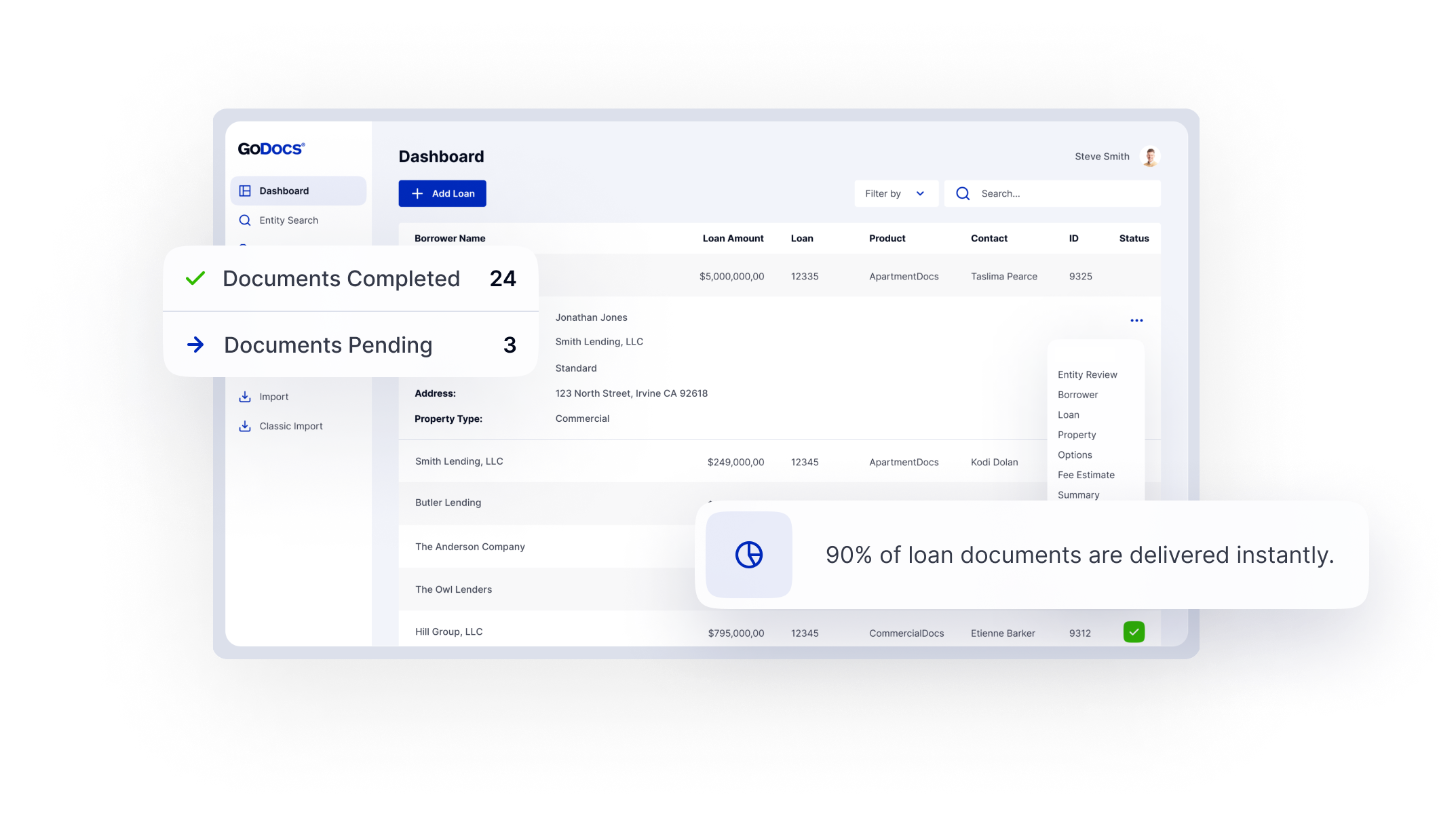As economic chaos continues, commercial lenders face a critical question: how do you protect your portfolio before problems become losses? The answer may lie in an unlikely place: the disciplined, time-tested playbook followed by insurance companies.
Why Insurance Companies Outperform in Downturns
Insurance companies consistently demonstrate lower default rates on commercial loans compared to banks and credit unions. According to S&P Global Ratings, the average default rate for insurance companies between 1981 and 2024 remains the lowest among financial and nonfinancial sectors, with a 10-year average default rate of just 0.05%, compared to 0.41% for banks and 2.06% for nonfinancial entities.
This outperformance stems from a rigorous commitment to asset monitoring, borrower engagement, and proactive risk management. Unlike Insurance companies, many banks and credit unions may overlook these tools until it’s too late.
Insurance Company Playbook: A Model for Commercial Lenders
Continuous Financial Covenant Monitoring
Key Takeaways
- Insurance lenders treat financial covenants as operational priorities, not just legal terms.
- Regular testing of DSCR, LTV, liquidity, and deposit thresholds helps identify risks early.
- Financials and rent rolls are tracked on a set schedule with clear escalation paths.
- Collateral is physically inspected and borrowers are engaged regularly.
- Early signs of stress should prompt lender-borrower dialogue before issues escalate.
- Proactive loan modifications and updated deal terms can improve repayment outcomes.
Insurance companies differentiate themselves through discipline around financial covenants. These are not just contract language, they’re operational priorities. Covenants like debt service coverage ratios (DSCR), loan-to-value ratios (LTV), minimum liquidity and/or tangible net worth, and minimum depository thresholds serve as early warning systems. Insurers monitor them regularly, not reactively.
They also build systems to enforce this discipline. Borrower financials, rent rolls, and operating statements are tracked on a consistent schedule, with clear escalation paths when metrics falter. This isn’t a crisis response; it’s standard operating procedure.
Finally, insurers physically inspect collateral assets and personally engage with their borrowers on a continuing basis to identify potential weaknesses with respect to the financial standing of loan parties and/or collateral properties before they become significant problems. This early attention to nascent changes in the quality and/or performance of their primary and secondary sources of repayment is a major factor in the success of insurance company lenders to keep loan delinquencies to a minimum.
For traditional lenders, adopting this approach means instituting regular covenant testing, continuous financial reporting analysis, and periodic personal evaluations of both the key loan parties and their collateral assets. Don’t wait for a missed payment or a failure to maintain mandated insurance coverage. Require timely financial reporting and covenant testing. Review the results closely. Inspect the collateral. Speak with the property manager and, if different, your borrower. If you see signs of stress, you have the opportunity to engage with your borrower to act early so as to create a resolution where both lender and borrower can benefit.
A proactive loan modification might include modifying repayment terms and conditions, extending the maturity date, enhancing reporting obligations and covenant testing, and/or imposing new cash management restrictions. Early intervention permits a lender to update its -underwriting of the transaction in order to adjust key deal terms to improve the likelihood of repayment, all while attending to any legal or structural changes since loan origination.
Live by your covenants, your diligent monitoring, and proactive solutions. If you aren’t tracking them, you’re flying blind and can’t adjust your flight path.
Regular Property Inspections: Ground Truth Over Paper Assumptions
Insurance companies don’t just review spreadsheets. They get out and see their assets. Physical inspections are integral to their asset management strategy. They walk the properties, assess tenant mix and surrounding neighborhood, verify occupancy, and evaluate overall property condition firsthand.
Many lenders rely solely on financial statements and rent rolls. But those documents often fail to reveal hidden risks. A building that appears 90% occupied may be full of “go dark” tenants (i.e., businesses no longer operating but still paying rent). These tenants can disappear quietly at the time of an anticipated lease renewal or can disrupt the leasing of adjoining tenant spaces.
Physical condition reveals the true state of an asset. Are the lights on? Are tenants active? Are there signs of deferred maintenance or evidence of cost-cutting? Are recession-prone industries overrepresented in the tenant base? These questions are best answered on-site.
During the Great Recession, lenders who routinely inspected properties had a clear edge. They understood their portfolios and could act decisively, while others scrambled to catch up.
Inspections also allow for mid-term re-underwriting. If the asset’s performance has shifted, many loan documents allow you to trigger rights—like requiring additional reserves or stepping up reporting requirements. But you can’t pull those levers if you’re unaware of the deterioration.
Paid-but-empty space still presents risk. It may not hit the income statement yet, but when it does, you need to be ready.
✅ Action Checklist for Commercial Lenders
- ✔️ Conduct regular physical inspections of collateral properties.
- ✔️ Assess tenant activity, occupancy, and property condition firsthand.
- ✔️ Verify tenant mix and watch for “go dark” tenants that financials may miss.
- ✔️ Look for signs of deferred maintenance and cost-cutting measures.
- ✔️ Evaluate tenant exposure to recession-prone industries on site.
- ✔️ Use inspections to inform mid-term portfolio re-underwriting.
- ✔️ Trigger loan rights like additional reserves or increased reporting when deterioration is detected.
- ✔️ Prioritize inspections to maintain a strong understanding of your portfolio and act proactively.
Proactive Borrower Engagement: Relationships Are Risk Management
Key Takeaways
- Maintain regular, personal engagement beyond just collecting reports.
- Strong borrower relationships create transparency and early warning opportunities.
- Proactive communication allows lenders to intervene before issues escalate.
- Early engagement makes loan restructures more effective while loans are still performing.
- Use loan modifications to secure enhanced legal protections.
- Don’t assume borrower sophistication; lender involvement can prevent surprises.
Insurance companies maintain close relationships with their borrowers. This isn’t just about receiving quarterly reports. It’s about real engagement: regular calls, site visits, and operational check-ins. They ask deeper questions about tenant retention, industry shifts, and cash flow challenges. They listen.
Early engagement creates two major advantages: seeing early warning signs and establishing the goodwill needed for action. If a borrower’s business is softening, they’re more likely to share that if the relationship is strong. That heads-up gives you time to adjust before performance falters.
Consider a loan that originated in 2017 with a 15-year term. In 2025, the borrower might be struggling with rising expenses or declining revenue. If you’ve stayed close to the overall situation, you’ll see these challenges early. If you haven’t, your first sign could be a missed payment, which may be too late to explore the best resolution of the matter.
Engaging early opens the door for loan modifications. When both parties are motivated and the loan is still performing (even if only minimally or for the present), you can offer temporary relief (e.g., restructured repayment terms or loan maturity extensions) in exchange for enhanced legal protections, e.g., updated and expanded collateral rights, updated financial covenants, and/or limitations on bankruptcy remedies.
Certain borrower rights (like protections available under the “one action rule” in various western states) can’t be waived at closing. However, as consideration in a negotiated loan restructure, borrowers may waive or limit their protections under this rule in exchange for concessions.
Commercial lenders often assume commercial borrowers are more financially sophisticated than consumer borrowers. That’s a risky assumption. Many business owners don’t catch red flags until it’s too late. Your engagement can fill that gap.
Reach out before there’s a problem. Ask more frequent and probing questions. Use what you learn to safeguard your investment in the borrower’s business.
Strategic Loan Modifications: Use the Window While It’s Open
Modifications too often are reactive. But when approached strategically and early, they can significantly strengthen your portfolio.
Insurance companies excel here. They spot trouble early and treat modifications as an opportunity to fix structural weaknesses. This might include updating outdated loan documents, repricing terms, and/or negotiating new covenants. The goal is to fortify the loan, not just delay default.
Let’s revisit the 2017 loan example. The property’s net operating income is declining. The borrower is still paying, but pressure is building. If you act now, you can propose a deal that works for both sides. For example, maybe extending the loan, offering temporary rate relief, or adjusting amortization. In return, you update the legal structure to adress the current risks.
Key benefits of early loan mods:
- Update outdated documents: Reflect legal and regulatory changes since origination.
- Negotiate waivers: Borrowers can waive certain rights in exchange for concessions.
- Strengthen bankruptcy protections: While rights can’t be waived outright, remedies can be expedited or clarified.
- Adjust covenants: Add or tighten financial tests to match the current reality.
- Reprice for risk: Reflect the true risk profile of the asset and borrower.
Wait too long, and these options disappear. The borrower may lose the ability to cooperate. Legal leverage erodes. Your choices shrink to litigation or enforcement.
Act while the loan is performing. That’s when your leverage is strongest, and your outcomes most favorable.
✅Strategic Loan Modification Checklist
- ✔️ Act early to strengthen your portfolio, not just delay defaults
- ✔️ Update loan documents to reflect current legal and regulatory standards
- ✔️ Negotiate borrower waivers for rights in exchange for concessions
- ✔️ Strengthen and clarify bankruptcy protections and remedies
- ✔️ Adjust covenants to match current financial realities
- ✔️ Reprice loans to reflect updated risk profiles
The Time to Act Is Now
With a wave of commercial loan maturities ahead and macroeconomic volatility rising, this is your window to prepare. Review your portfolio. Identify at-risk loans. Engage borrowers. Visit properties. Strengthen your documents.
The insurance company playbook isn’t revolutionary. It’s disciplined, proactive, and proven. Lenders who adopt it will weather the downturn. Those who don’t may find themselves reacting too late.
Think like an insurance company. And do it now before performance becomes a problem.
Head of Business Strategies & Partnerships








